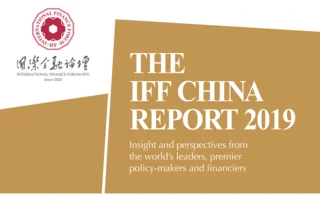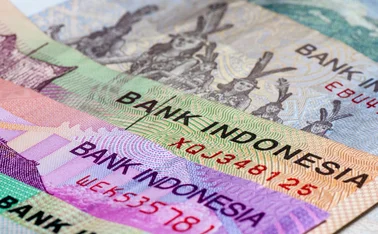
Top gear – The drive to openness


A major new round of developments, transformation and adjustments is unfurling as economic globalisation continues to progress. Economic globalisation is an inevitable consequence of the development of social productive forces and the objective requirements of the flow of capital, commodities, labour and other factors of production. It has injected powerful impetus into world economic growth over the past few decades, causing new landscapes and changes to emerge.
An economy in neutral
The global economy is in transition: traditional growth momentum is insufficiently powered by sluggish demand while the new round of scientific and technological revolution and industrial transformation is positioned for dynamic growth. The shift between driving forces has not yet been completed.

The World Trade Organization (WTO)-based multilateral trading rules are haunted by protectionism, unilateralism and anti-globalisation. Trade disputes have intensified and the global trading system has been severely tested.
New industrial, value and supply chains are increasingly being forged through adjustments in the industrial division of labour, while international competition and co-operation are following new trends.
The spillover effects of monetary policy in major economies are becoming more pronounced. Large-scale capital flows could lead to financial market turmoil, slowing long-term economic growth.
In governance, relative international economic strengths have evolved, with emerging markets and developing countries accounting for around 80% of the world’s economic growth. Reform of the governance system and the international order is gaining speed. In the face of these economic twists and turns, only by strengthening openness and co-operation and working together to cope with risks and challenges can the world achieve mutual benefit and common development.
China champions economic globalisation and has made important contributions to building an open world economy. In the past 40 years of its reform and policy of ‘opening-up’, China has continuously enhanced co-operation with ‘wide-open door’ policy and has sought common development – from actively ‘bringing in’ and ‘going global’, to the Belt and Road Initiative (BRI), which aims to promote connectivity in policy, infrastructure, trade, finance and interpersonal exchanges.
When China joined the WTO in 2001, the nation was a novice at following international economic and trade rules. Today China is an active proponent of global governance, boosting trade and investment liberalisation and facilitation, and advocating a community with a shared future for mankind. China’s pace of opening-up has never ceased, and its openness benefits the rest of the world. Today, China is the world’s second-largest economy, the biggest trader of goods, and a major trading partner of more than 130 countries. It’s GDP per capita exceeded US$8,800 in 2017, leapfrogging it from a low- to middle-income country. China has contributed more than 30% to world economic growth for many years, acting as the major stabiliser of the global economy, an important driving force for economic globalisation and an active contributor to global governance reform.
Standing at the crossroads of history, China will conform to the trend of globalisation and continue to advocate for high-quality development, which has now supplanted high-speed growth as the economy’s primary model. This transformation is optimising the economic structure and transitioning growth momentum. At this important juncture, it is necessary to take the following aspects into consideration to adapt to the new trends of globalisation and build an upgraded version of the Chinese economy:
1. Ensuring a more open economy, further expanding opening-up and creating a more comprehensive, deeper and more diversified opening pattern in the face of deep-seated contradictions and bottlenecks in development.
2. Continuing to follow the path of innovation-driven development. With the decline of the traditional advantage of low-cost goods, it is necessary to further enhance research and development capabilities, increase total factor productivity and convert economic growth dominated by resource and capital investment into one relying on independent innovation and domestic demand expansion.
3. Establishing market laws, easing market access, reducing market failures and costs for trial and error, and ensuring the market plays a decisive role in resource allocation.
4. Gradually narrowing the income gap between urban and rural areas and among regions, providing more support for the rural areas in the central and western regions of China, and improving the wellbeing of the population.
5. Encouraging the diversified development of finance, deepening the reform of the investment and financing system, improving financial ecology, establishing a co-operative system of diversified financial development, reducing the financing costs of the real economy, and preventing systemic financial risks.
The China Development Bank (CDB) will continue to play a significant role in serving China’s high-quality economic development while ameliorating economic globalisation. As a state-owned development financial institution, the CDB has for many years been an indispensable financial power in socioeconomic development, serving the national strategy and vigorously supporting infrastructure, basic sectors and pillar industries, people’s livelihoods, science and technology, environmental protection and other social services.
Meanwhile, the CDB has worked closely with international governments and organisations to serve the BRI and has actively engaged in global financial governance by initiating the Shanghai Cooperation Organisation Interbank Consortium, the China–ASEAN (Association of Southeast Asian Nations) Interbank Consortium, the Brics (Brazil, Russia, India, China and South Africa) Interbank Cooperation Mechanism, the China–Central and Eastern Europe Interbank Consortium, the China–Arab States Interbank Consortium and the China–Africa Financial Cooperation Interbank Consortium. The CDB assumes responsibility for enhancing multilateral financial co-operation and advancing China’s participation in globalisation in broader ways and at a higher level.
Future gazing
The CDB will continue to develop its strengths as a financial bank, and will become a world-class financial development institution and an active power in globalisation. Domestically, the CDB will continue to push forward the construction of a modern economic system and, in accordance with the requirements of high-quality development, the CDB will deepen supply-side structure reform and promote the development of cutting-edge fields such as IT, intelligent manufacturing and green energy to drive change in the quality, efficiency and power of economic development.
Globally, the CDB will support the development of the BRI to build a community with a shared vision and future for mankind. With the concept of mutual benefit and a win-win outcome in mind, the CDB will support the BRI’s key areas and projects in a market-oriented manner to enhance the livelihood of people in countries along the route, and help establish a new level of openness to the outside world. Continued efforts need to be made to deepen co-operation with financial institutions worldwide and forge synergy to provide long-term, stable, sustainable and risk-controllable financial support for economic development. The CDB stands ready with all parties to advance openness and co-operation and make new and positive contributions to the shared development of an open and innovative world economy.
Only users who have a paid subscription or are part of a corporate subscription are able to print or copy content.
To access these options, along with all other subscription benefits, please contact info@centralbanking.com or view our subscription options here: http://subscriptions.centralbanking.com/subscribe
You are currently unable to print this content. Please contact info@centralbanking.com to find out more.
You are currently unable to copy this content. Please contact info@centralbanking.com to find out more.
Copyright Infopro Digital Limited. All rights reserved.
As outlined in our terms and conditions, https://www.infopro-digital.com/terms-and-conditions/subscriptions/ (point 2.4), printing is limited to a single copy.
If you would like to purchase additional rights please email info@centralbanking.com
Copyright Infopro Digital Limited. All rights reserved.
You may share this content using our article tools. As outlined in our terms and conditions, https://www.infopro-digital.com/terms-and-conditions/subscriptions/ (clause 2.4), an Authorised User may only make one copy of the materials for their own personal use. You must also comply with the restrictions in clause 2.5.
If you would like to purchase additional rights please email info@centralbanking.com







